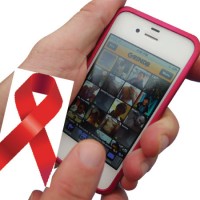Article from California Newswire
SAN FRANCISCO, Calif.— S.F. Mayor Edwin M. Lee today officially cut the ribbon to open the San Francisco Department of Public Health (DPH)’s new Bridge HIV research facility as part of the City’s new $9.5 million HIV/AIDS Research Center, located at 25 Van Ness Avenue.
“The research that has come out of the San Francisco AIDS Office has changed the way we look at, treat and prevent the spread of HIV/AIDS all over the world,” said Mayor Lee. “The new state-of-the-art Bridge HIV facility reflects the commitment and integrity of the work that goes on here, and we have produced a new innovative world class center for world class researchers.”
“As one of the earliest and hardest hit cities, San Francisco has always been at the forefront of responding to the crisis of HIV/AIDS – from our community-based model of care to the cutting edge research at UCSF,” said Democratic Leader Nancy Pelosi. “With the addition of the federally-supported Bridge HIV Research Facility, our city will continue to lead the way as we strive for better treatments, a vaccine and finally a cure to the scourge of HIV/AIDS.”
“As Health Director, one of my primary concerns is bridging the gap in health disparities,” said DPH Director of Health Barbara Garcia. “This new facility will allow us to increase our recruitment, enrollment and retention of large and diverse populations of study participants. Also, we will increase our capacity to train students and other researchers and expand our ability to collaborate with other groups and seek input from members of the community.”
The Bridge HIV completion marks the end of phase one of the SOAR project (San Francisco Office of AIDS Renovation). The DPH project is funded by a grant through the National Center for Research Resources at the National Institutes of Health and is part of the American Recovery and Reinvestment Act (ARRA). The new 17,000 square feet HIV/AIDS research center will expand and improve the existing research activities and accommodate future scientific needs.
The historic 25 Van Ness Avenue building was built in 1911 and was formerly a Masonic Temple, designed by Walter Bliss. The historic architecture, statuary and wall murals were preserved as an integral part of the new AIDS Research Center. The Department of Public Works (DPW) provided architectural services and project management. Construction work started on December 2011 and with the first major phase completed, this project is on time and within budget. The overall project is now 75 percent complete, with additional work on upper floors 5 and 6 remaining, and will be fully completed in 2013.
“I’m proud that this important project was designed by DPW’s architects and engineers working closely with the Department of Public Health’s Office of AIDS,” said DPW Director Mohammed Nuru. “While the project presented some challenges – such as being fully occupied during construction – I’m happy to say that we stayed within our planned schedule and budget.”
San Francisco’s early HIV/AIDS epidemiology and research played a major role in the discovery of the virus that causes AIDS. The AIDS Office was created in 1982 as the City began responding to the newly-evolving AIDS epidemic, concentrated, at that time, in San Francisco, Los Angeles and New York. Along with tracking new AIDS cases among residents, the AIDS Office and also began to study the natural history of AIDS among 6,740 gay and bisexual men who had participated in an early study of hepatitis B. The specimens collected through these studies lead to the first HIV Antibody test licensed in the US and data from this study also set the standard for defining risk factors for HIV, rates of progression and other factors responsible for long-term non-progression. San Francisco DPH is recognized as a global leader in AIDS research and prevention.
Thirty years after the discovery of the virus that causes AIDS, the San Francisco DPH’s AIDS Office has matured into three independent and collaborative grant-funded research units managing a $46 million research portfolio.
•Bridge HIV (formerly HIV Research Section) under the direction of Susan Buchbinder, MD, is a leading site in the National Institute of Health-funded HIV Vaccine Trials Network, Prevention Trials Network, clinical trial groups of HIV Pre-Exposure Prophylaxis (PreP), and other investigator-initiated research. Researchers are experts in HIV vaccine and prevention science, methods for measurement of adherence, combination HIV prevention strategies and innovative research training methods.
•HIV Epidemiology Section, led by Willie McFarland, MD and Susan Scheer, evaluates the incidence and prevalence of persons with HIV/AIDS. The investigators are global leaders in seroepidemiology and clinical outcomes, risk behavior assessment, community strategies for decreasing risk practices, sampling hard-to-reach populations and training international delegations on surveillance, sampling and interview techniques.
•HIV Prevention Section, led by Acting Director Tracey Packer, is the leading site for the National Institute Drug Abuse AIDS-funded Clinical Trials Network. For the past 30 years, researchers have been working to reduce HIV risk among methamphetamine users, novel HIV testing and partner notification strategies and the community-level impact of antiretroviral therapy to reduce HIV transmission.









